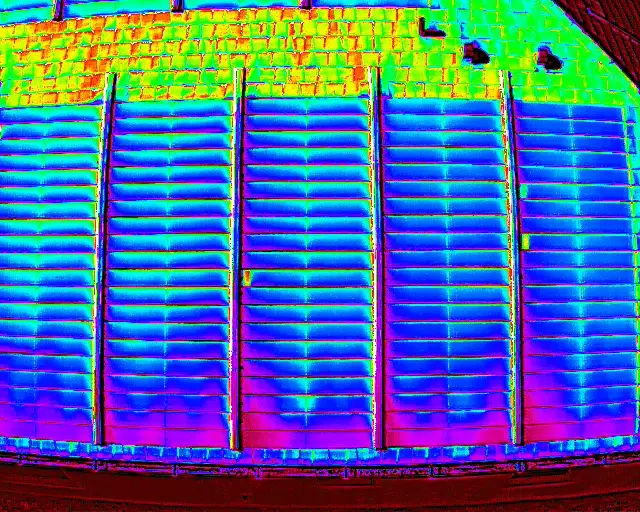Published:
Remote ID (RID) has been the subject of discussion for UAS pilots operating in the United States for a while now. With both positive and negative first reactions to the news, and after many rollout delays, RID is happening. If your drone doesn’t have an integrated RID, one will need to be attached to the body by March 16, 2024, at the latest. Fortunately, there are easy ways for you to keep your registered drone compliant with the FAA. Unfortunately, this is a matter of spending a little extra money. The goal of this post is to inform you where your money will be best spent.
If you don’t already know, remote ID is essentially a license plate for your drone. It broadcasts identification and location information, in a plan to regulate drone operations and increase pilot accountability. With the number of drones in our airspace constantly growing, RID will help the FAA, law enforcement, and other federal agencies identify unsafe practices. This is all in an effort to integrate drones into National Airspace safely, allowing for more diverse and advanced drone operations. Newer mainstream drones such as DJI’s Mavic 3, Avata, and Air 2S have remote ID built in, so be sure you understand what is required for your go-to drones. But commercial pilots using DJI products have a different problem to worry about, more on that later.
With the announcement of RID, many drone-oriented companies saw the opportunity to fill the need with their own hardware. These products vary in design to fit what best suits your UAS. Luckily most designs have been kept fairly simple, and will only add the one small extra step of attaching the device safely somewhere onto your UAS. You will need to register these modules to your drones on the FAADroneZone website, but the bright side is that you can register the module to all of your already registered drones. Meaning that just purchasing one will cover your arsenal of aircraft so long that it’s compatible with the body. You can find a tutorial on registering your RID to your drones here:
As a small company, we love to work with other small companies who share our common goal: to implement drones in as many industries as possible and to ensure the safety of everyone involved. Our partner Zing Drone Solutions works tirelessly to develop products that will integrate drones seamlessly into our everyday lives. Their latest product, also endorsed by Skyway, is a RID module that is easily attached to the body of your aircraft using a velcro patch. This 35-gram module is all you need to ensure your drone is compliant, if it can fit onto the body then it’ll work for you. A flight test with the DJI Mini showed no adverse effects on the flight of the aircraft. A battery life of up to 14 hours will suffice for a full day of uninterrupted flying, so the only thing you need to worry about is daylight. We joined up with Zing and did a test flight using our Matrice 210. The module stuck well onto the drone, we had no fears of it coming off or disrupting the flight. The GPS converged quickly and just like that we were embraced by the loving arms of FAA compliance.
Another important point about the Zing module is that it’s American-made, and if you’re following the drone news you already know how important this is. Many major companies are making efforts to move away from foreign made drones with concerns of who their data is visible to. Many big industries have already begun restricting use of DJI products, and there’s a race to compete with the reliability and ease of use that DJI has achieved. With DJI being the most successful consumer drone company in the world, being used for US infrastructure, and by military and law enforcement, there was a growing concern at the amount of data that China was collecting. So, a bill was passed that “prohibits the FAA from providing federal funds to certain foreign drone companies,” and “prohibits the FAA from procuring or operating certain foreign drone companies”. The bill names China, Russia, Iran, North Korea, Venezuela, and Cuba as restricted countries. I have already witnessed this shift begin to take place in multiple industries. The inspection industry had concerns about Chinese drones since before this bill passed, but now the shift is eager and rapid. The drone videography course that I took at the University of South Florida a little over two years ago, has made the transition from using the DJI Phantom 4 to SkyDio 2+ drones this semester. With this being said, you would be doing yourself a favor by purchasing a USA-made RID module, and consider familiarizing yourself with some of the leading American-made drones on the market.
Considering you will have to comply with RID if you want to remain a commercial pilot, our recommendation is to look into American-produced modules to ensure that your RID won’t become restricted by any further legislation. The March 16, 2024 deadline is the final date that you can fly without RID, it’s actually already in effect. So, make the FAA happy and pick one up as soon as possible, and be the best pilot that you can be. If you choose to go with our recommendation and purchase the Zing Remote ID, be sure to use our code “HARTLEY” for a discount: https://zingdrones.shop/discount/HARTLEY.





Are you interested in drones? Send us an email and to book a free consultation to see how we can elevate your project! Our FAA Certified pilots are ready to assist you.